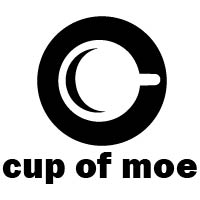We may earn money or products from the companies mentioned in this post.
Wes Craven-directed “The Serpent and the Rainbow” follows ethnobotanist and anthropologist Dennis Alan (Bill Pullman) as he investigates a mysterious account of supposed zombification. Based on the non-fiction book of the same name by ethnobotanist Wade Davis, it’s a well-shot, noir zombie flick.
A man named Christophe (Conrad Roberts) passes away at a French missionary clinic in 1978 Hati. Outside, there’s a voodoo parade and a strange man in a suit. After receiving a Catholic burial, however, Christophe’s eyes open.
Flash forward seven years, and renowned anthropologist and ethnobotanist Dennis Alan (Pullman) experiences a disturbing vision after drinking a hallucinogenic drink in the Amazon. During this dream, he sees the strange man who was by Christophe’s funeral. But Alan escapes the Amazon and returns to Boston. There, he’s contracted by a large pharmaceutical company to probe a potential drug used in Haiti to create zombies. The concept is that this may be used in medicine as an anesthetic.
Upon arriving in Haiti, Alan meets Dr. Marielle Duchamp (Cathy Tyson), who in turn introduces Alan to Christophe’s sister and aids in the investigation. However, Captain Dargent Peytraud (Zakes Mokae), commander of the Tonton Macoute secret police, attempts to thwart Alan’s inquiry.
While “The Serpent and the Rainbow” is a zombie film, it’s not truly a horror film. Moreover, its version of zombies are akin to the earliest iterations, preceding the George A. Romero “Night of the Living Dead” incarnation. Before Romero ushered in a complete overhaul of the concept, the first usage dates back to 1819 and is of West African origin. Later, in 1929, W.B. Seabrook covered the voodoo zombie concept in his book The Magic Island. It’s this version, quite literally the undead, which “The Serpent and the Rainbow” explores.
Where “The Serpent and the Rainbow” truly shines is in its departure from the brain-chomping zombies. Instead, there’s a return to the Haitian voodoo roots of the zombie genre. It’s complemented by a scientific approach to the notion of the undead. Because “The Serpent and the Rainbow” swaps brain eaters for a semi-plausible explanation, there’s a more “Indiana Jones” vibe than “Dawn of the Dead.” The cinematography shines with vivid scenery and set design. Its effects remain convincing with masterful execution. Brad Fiedel handles the score which is ripe with elements of his 1984 “The Terminator” soundtrack.
It’s a story-driven film which relies partly on Alan’s narration as well as character development. From Alan’s arrival in Haiti, it’s clear there’s a budding romance with Marielle. “What I hadn’t expected was that the dark presence from the Amazon would instantly come over me here, as real as a cold hand falling on my shoulder. And I also didn’t expect Dr. Duchamp to look like…Dr. Duchamp did.” After forcible removal from Haiti, Alan returns. While it’s in part to deal with Peytraud, who persists in following Alan around the world via possession, it’s largely because of Marille. With his narration, Alan simultaneously infuses a noir aesthetic and delivers field note-style commentary.
Perhaps Andrew Cassedy (Paul Guilfoyle) sums it up best when he says “…if you don’t like the word zombie, you can choose another word.” Though it’s actually a more accurate portrayal of how the term originated, “The Serpent and the Rainbow” delivers a major deviation from what the word now connotes. With its adventure theme, superb effects, and juicy noir undertones, “The Serpent and the Rainbow” ranks among Wes Craven’s most underrated flicks, offering a fresh on the zombie genre.
This post may contain affiliate links. We are a participant in affiliate programs such as the Amazon Services LLC Associates Program, an affiliate advertising program designed to provide a means for us to earn fees by linking to Amazon.com and affiliated sites. However, all products are thoroughly tested and reviews are honest and unbiased.

